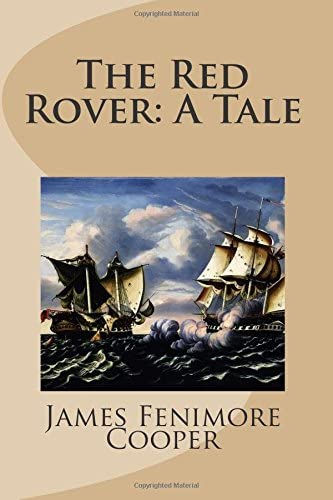Are The Strange Lawrence Brook Carvings In New Jersey A Cryptic Message?
Jan Bartek - AncientPages.com - How can we tell what old carvings are worthy of further investigation and may contain a secret message? Sometimes, we encounter carvings we cannot decipher, and they turn into a mystery we struggle to solve. Occasionally, we misinterpret symbols that are pointless drawings made on rocks for no reason.
In 1876, M. Danbury and Elias Suydam carved their initials, mysterious symbols, and a skull and crossbones along the shale outcroppings on the Lawrences Brook, Weston Mill Pond, and the Raritan River. Along with the symbols, the two men also carved the words “Centenial Year” and ”Red Rover”. Red Rover was a pirate novel written by James Fenimore Cooper in 1839. It is not clear why the two men did this. The one thing that can be inferred is that the men were skilled in stone carving and may have been apprentices to local carvers. Source: Mark Nonestied - East Brunswick (Images of America) - Photo credit: Christine Arciszewski
Many strange symbols are carved into the red sandstone along Lawerence Brook off the Raritan River in New Jersey. The carvings are the work of Elias Suydam, age 19, and Henry Monroe Danbury, age 19. In 1876, the two men etched the symbols into a rock for an unknown reason. At first sight, the carvings may appear crude and childish, but those who examined them say Suydam and Danbury knew precisely what they were writing.
Some of the Lawrence Brook carvings include the authors’ names, initials, the words “Red Rover,” the year 1876, skulls, navigational coordinates, a compass, and a mystery cipher. It is an unusual composition, which has led to the speculation that this is a treasure map.
The Red Rover is a novel by American writer James Fenimore Cooper originally published in Paris on November 27, 1827. It was published in London 3 days later on November 30, and was not published in the United States until January 9, 1828 in Philadelphia. Soon after its publication it was adapted for theater both in the United States and in England. The novel follows the activities of the sailor Dick Fid, free black sailor Scipio Africanus and Royal Navy officer James Wilder as they encounter the famous pirate, "The Red Rover". Read more:
Local historian Ann Alvarez was especially intrigued by the skull and crossbones and was able to link them to “Red Rover,” the name of a famous pirate novel of the time.
During a presentation at East Brunswick Historical Society’s Farmhouse, Alvarez shared her research with the audience and explained that the carvings are within four miles of each other, with four sites in New Brunswick and one in East Brunswick.
The exact location of the rocks is kept secret to protect the sites from being vandalized.
“I tried to find out who was Red Rover … because of the pirate theme already on the rocks. I found two Red Rovers that were pirates,” Alvarez said. “One was from a book of fiction [titled] ‘Red Rover’ written by James Fenimore Cooper and the real Red Rover who was Sir Thomas of Longueville who was captured during the Battle Farra in 1308.”
Along with carving his name and other symbols on the Edgeboro Rock, Alvarez said Danbury’s friend Suydam also carved his own cryptogram that contained navigational coordinates.
Lawrence Brook in East Brunswick, New Jersey. Credit: Public Domain
Following the coordinates left by Suydam, Alvarez said it led her to another rock covered with inscriptions, and she named this rock the East Brunswick Rock.
Alvarez said both Suydam and Danbury carved their name at the East Brunswick Rock. A skull and crossbones were also carved into the rock and Suydam carved another cryptogram and a compass.” 1
The local expert also determined that one of the symbols belonged to the Fraternal Order of Masons. She wondered how and why the Lawrence Brook carvings were linked to the Freemasons.
Eventually, she learned that Suydam and Danbury’s names could be found on two stone blocks in the Buccleuch Tunnel along with “x” marks and another Royal Arch Mason symbol.
Alvarez said she discovered a connection between the Buccleuch Mansion and the Fraternal Order of Masons.
“Two of Buccleuch Mansion’s most prominent owners held high positions within that organization. Anthony Walton White, who was the first owner, was called “the worshipful master of the all Washington Lodge 12’ between 1794 and 1796,” Alvarez said, “while its later owner Joseph Warren Scott was a grand master of the masons in the mid-1800s.” 1
The Buccleuch Tunnel was destroyed some years ago, but the Danbury and Suydam’s blocks were saved and are currently at the Buccleuch Mansion.
A cryptologist who examined the Lawrence Brook carvings said the peculiar ciphers on the rock could be saying, Red Rover.
It is interesting because the carvings are in an area once part of a steamboat dock.
Whaleboat captain and notorious privateer Adam Hyler owned a house nearby, and during the Revolutionary War, his men sought out British ships to capture for the American cause. Many considered Hyler a pirate; according to Alvarez, he can be linked to the infamous “Red Rover.”
According to Alvarez’s research, one cannot dismiss the possibility that the carvings referred to Hyler and a treasure hidden in the area today are worth millions of dollars.
Suppose the infamous captain did hide a treasure. In that case, Lawrence Brook seems like a possible hiding place because it would have been the last accessible brook before New Brunswick via the Raritan River.
Until now, no one has been able to decode these strange etched symbols that look like letters of some kind but do not resemble any known language. This mystery is unlikely to be solved because many carvings have been removed or eroded. Perhaps the secret will be forever kept by the Lawrence Brook carvers.
Written by Jan Bartek - AncientPages.com Staff Writer
Updated on January 6, 2024
Copyright © AncientPages.com All rights reserved. This material may not be published, broadcast, rewritten or redistributed in whole or part without the express written permission of AncientPages.com
Expand for referencesMore From Ancient Pages
-
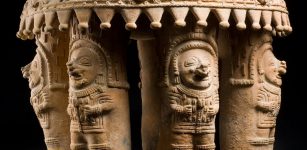 Ancient Secrets Of Sophisticated Jama-Coaque People
Civilizations | Sep 27, 2016
Ancient Secrets Of Sophisticated Jama-Coaque People
Civilizations | Sep 27, 2016 -
 Unknown Biological Entities And Disturbing Weather Phenomenon In Washington Still Baffle Scientists
Featured Stories | Jul 23, 2019
Unknown Biological Entities And Disturbing Weather Phenomenon In Washington Still Baffle Scientists
Featured Stories | Jul 23, 2019 -
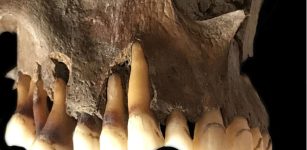 First Kisses May Have Helped Spread Oral Herpes 5,000 Years Ago – Scientists Say
Archaeology | Jul 30, 2022
First Kisses May Have Helped Spread Oral Herpes 5,000 Years Ago – Scientists Say
Archaeology | Jul 30, 2022 -
 Huangluo: Long-Hair Village Where Women Don’t Cut Their Hair – A 2,000-Year-Old Tradition Of The Yao People
Ancient Traditions And Customs | Jun 18, 2017
Huangluo: Long-Hair Village Where Women Don’t Cut Their Hair – A 2,000-Year-Old Tradition Of The Yao People
Ancient Traditions And Customs | Jun 18, 2017 -
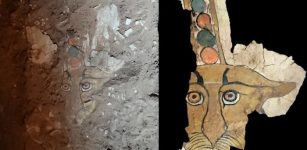 Rare Ancient Leopard Painting Discovered On Sarcophagus In Aswan, Egypt
Archaeology | Feb 25, 2020
Rare Ancient Leopard Painting Discovered On Sarcophagus In Aswan, Egypt
Archaeology | Feb 25, 2020 -
 On This Day In History: Attila The Hun Captures The City of Metz – On Apr 7, 451
News | Apr 7, 2017
On This Day In History: Attila The Hun Captures The City of Metz – On Apr 7, 451
News | Apr 7, 2017 -
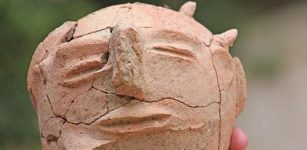 A Head Of A Statue Dated To 700 BC, Animal Figurines And Jordan Valley’s Occupation History
Archaeology | Sep 1, 2018
A Head Of A Statue Dated To 700 BC, Animal Figurines And Jordan Valley’s Occupation History
Archaeology | Sep 1, 2018 -
 Why Did King Solomon Hide Advanced Technology In A Secret Place? First Visit – Part 1
Featured Stories | Mar 30, 2021
Why Did King Solomon Hide Advanced Technology In A Secret Place? First Visit – Part 1
Featured Stories | Mar 30, 2021 -
 Latin America’s Oldest Beer Resurrected From 400-Year-Old Yeast
Archaeology | Aug 4, 2022
Latin America’s Oldest Beer Resurrected From 400-Year-Old Yeast
Archaeology | Aug 4, 2022 -
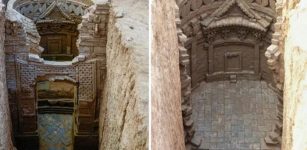 Incredible 700-Year-Old Tombs With Beautiful Decorations And Carved Bricks Found In Shandong, China
Archaeology | May 22, 2023
Incredible 700-Year-Old Tombs With Beautiful Decorations And Carved Bricks Found In Shandong, China
Archaeology | May 22, 2023 -
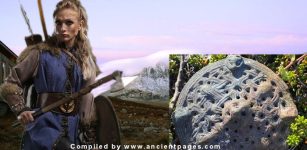 Fascinating Discovery – First Female Viking Grave Discovered In Swedish Mountains
Archaeology | Aug 20, 2022
Fascinating Discovery – First Female Viking Grave Discovered In Swedish Mountains
Archaeology | Aug 20, 2022 -
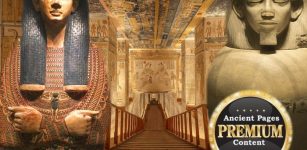 Forbidden Antediluvian Egyptian Secrets Revealed By Initiated Masters Show Most We Know About Egypt Is Wrong
Featured Stories | Aug 6, 2020
Forbidden Antediluvian Egyptian Secrets Revealed By Initiated Masters Show Most We Know About Egypt Is Wrong
Featured Stories | Aug 6, 2020 -
 Why Did Neolithic Make Us Taller And More Intelligent But More Prune To Heart Disease?
Archaeology | Apr 8, 2022
Why Did Neolithic Make Us Taller And More Intelligent But More Prune To Heart Disease?
Archaeology | Apr 8, 2022 -
 New Path For Early Human Migrations Contradicts A Single ‘Out Of Africa’ Theory
Evolution | Oct 5, 2023
New Path For Early Human Migrations Contradicts A Single ‘Out Of Africa’ Theory
Evolution | Oct 5, 2023 -
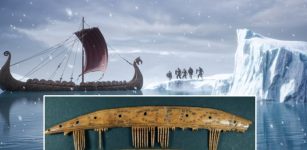 Vikings’ Long Distance Trade Reached The Arctic – Deer Antler Combs Reveal
Archaeology | Sep 19, 2023
Vikings’ Long Distance Trade Reached The Arctic – Deer Antler Combs Reveal
Archaeology | Sep 19, 2023 -
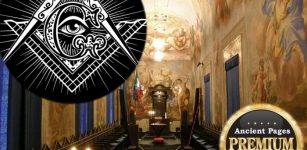 Secrets Of The Freemasons – Masonic Symbols Reveal Worship Of Ancient Mother Goddesses
Ancient Symbols | Jun 18, 2018
Secrets Of The Freemasons – Masonic Symbols Reveal Worship Of Ancient Mother Goddesses
Ancient Symbols | Jun 18, 2018 -
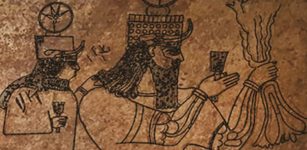 Unexpected Discovery Of Secret Underground Chamber Reveals Mysterious Neo-Assyrian Rock Panel
Archaeology | May 13, 2022
Unexpected Discovery Of Secret Underground Chamber Reveals Mysterious Neo-Assyrian Rock Panel
Archaeology | May 13, 2022 -
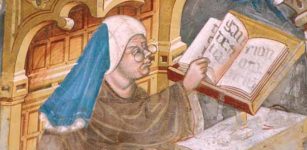 History Of Eyeglasses: One Of The Most Important Inventions Is Lost To History
Ancient Technology | Mar 10, 2016
History Of Eyeglasses: One Of The Most Important Inventions Is Lost To History
Ancient Technology | Mar 10, 2016 -
 2,000-Year-Old Roman Road Discovered In Cluj-Napoca, Romania
Archaeology | Jan 23, 2023
2,000-Year-Old Roman Road Discovered In Cluj-Napoca, Romania
Archaeology | Jan 23, 2023 -
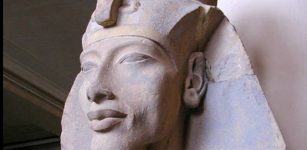 Akhenaten: Unorthodox Ruler Who Had Only One God
Featured Stories | Mar 28, 2017
Akhenaten: Unorthodox Ruler Who Had Only One God
Featured Stories | Mar 28, 2017


